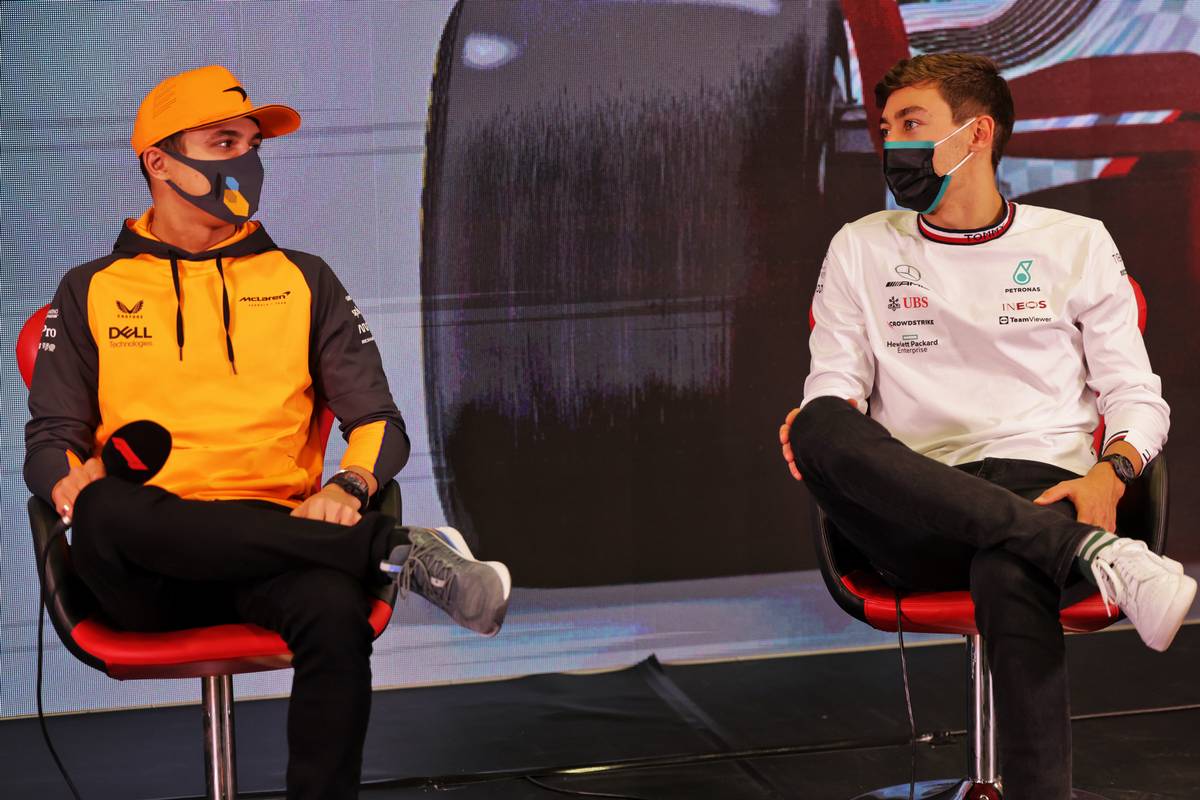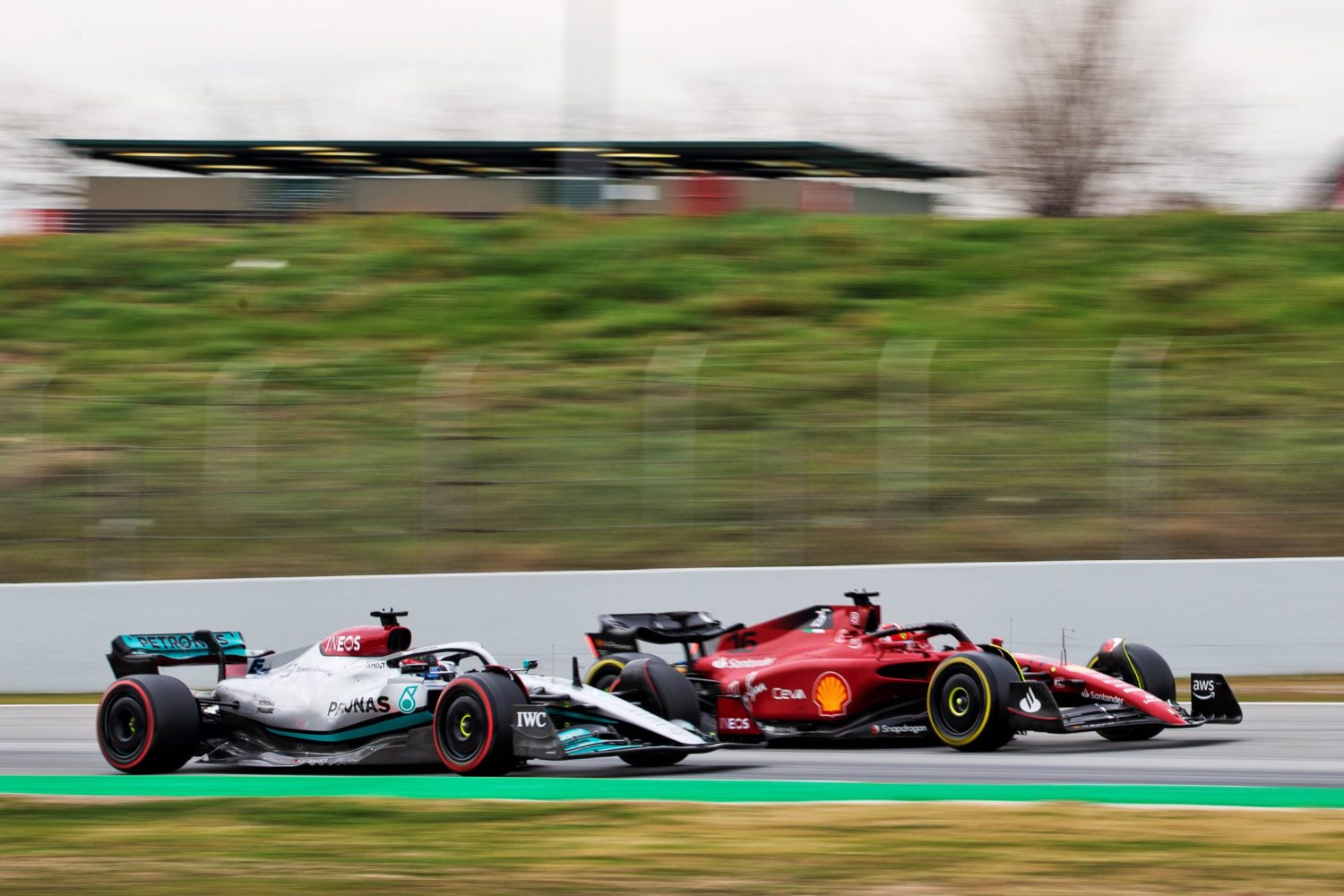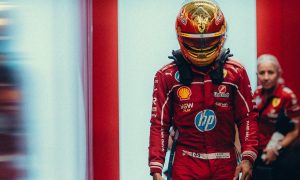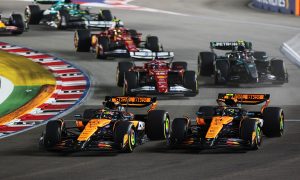
George Russell says F1's new regulations have improved a car's ability to follow more closely, but the Mercedes driver also noted the new aero design's concerning impact on slipstreaming.
A radical approach to aerodynamics based on ground effects, where a car's downforce is generated mainly by its venturi tunnel underbody rather than by its front and rear wings, should allow drivers to follow each other more closely under F1's new rules, therefore boosting overtaking opportunities and improving the show on the track.
In Barcelona this week, several drivers reported that running closer to another car is indeed easier under F1's new rules.
But Russell says a moment behind McLaren's Lando Norris on the Circuit de Catalunya's main straight resulted in a "concerning" peculiarity.
"I think the following has been improved but the slipstream effect has been reduced quite substantially," explained the Mercedes driver.
"You obviously need that delta in the straights to overtake because you can only overtake at the end of a straight and into a corner.

"We can follow closer but from what we have seen, the slipstream effect is definitely less effective. We will have to wait and see.
"I got right up behind Lando, I was a car-length or two behind him and didn’t catch him on the straight, so that was slightly concerning so let’s see."
Norris echoed Russell's comments but insists that more running is necessary to get a clearer picture of the true impact of the new regs.
"We can follow closer but then the slipstream is worse so a positive and a negative from it," said the McLaren driver.
"We don’t know which is the bigger effect at the minute so we will have to see until the first race."
Meanwhile, Ferrari's Charles Leclerc also noted a strange phenomenon running in the wake of a another car down Barcelona's main straight.
"It is quite interesting, because I'll say from three seconds to one second behind the car in front, you actually can follow closer," explained the Monegasque.
"Then from one second to five tenths, I will say it's similar to the feeling I had last year.
"And then from five tenths to extremely close, then this is much better than last year. It is nice, it's interesting. I mean, I'll have to do a few more laps behind a car, but it's looking good for now."

Red Bull's Max Verstappen had no strange effects to report, and described F1's new-spec cars as "fine".
"I've been following a few cars, and it seems like it's a little bit easier to stay behind," said the Dutchman.
"At least you don't have this weird loss of downforce where suddenly you have a lot of understeer or massive oversteer.
"Of course, I don't expect it to be fully gone and that you can follow on the rear diffuser, because of the speeds we're still doing in an F1 car, but it all seems a bit more under control. The cars are fine."
Keep up to date with all the F1 news via Facebook and Twitter







